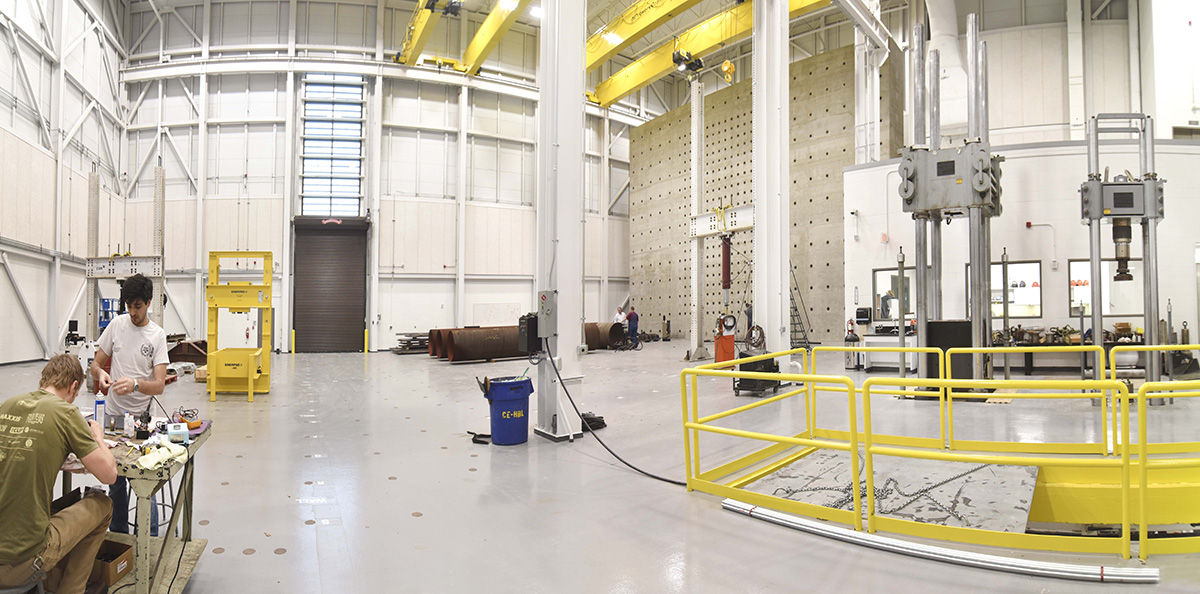Quality Assurance Unleashed: Material Testing Lab for Project Integrity
Quality Assurance Unleashed: Material Testing Lab for Project Integrity
Blog Article
Unveiling the Tricks of Materials: Developments in Modern Product Testing
In the ever-evolving globe of products scientific research, scientists are frequently looking for means to open the hidden tricks of different compounds. The mission to comprehend the buildings, actions, and possible applications of products has led to amazing advancements in modern-day product testing. From nanotechnology and man-made intelligence to non-destructive testing and high-throughput testing, brand-new strategies are arising that promise to reinvent our understanding of materials.
Nanotechnology: Enhancing Material Evaluating Capabilities
Nanotechnology has transformed material screening by improving its abilities and enabling unmatched accuracy and accuracy. With the capacity to control and control products at the nanoscale, engineers and scientists have actually had the ability to reveal brand-new insights into the behavior and homes of various products. This has opened up a whole new method for material screening, making it possible for researchers to delve much deeper right into the fundamental features of products and explore their potential applications.
Among the essential benefits of nanotechnology in material screening is its capability to provide extremely precise dimensions. By making use of specialized nanoscale probes and sensors, scientists can obtain thorough info concerning a material's mechanical, electric, and thermal buildings. This level of precision is essential for markets such as aerospace, auto, and electronic devices, where also the slightest variance from desired specs can have substantial consequences.
In addition, nanotechnology has actually enabled the advancement of unique testing techniques that were formerly unimaginable. For instance, scanning probe microscopy strategies, such as atomic force microscopy and scanning tunneling microscopy, make it possible for researchers to visualize and adjust materials at the atomic degree. This unprecedented level of control and observation has actually led the means for advancements in comprehending material habits and creating cutting-edge products with customized homes.
Expert System: Revolutionizing Material Analysis
The integration of expert system has actually produced a revolution in product evaluation, significantly enhancing the speed, accuracy, and efficiency of the procedure. With the ability to evaluate large amounts of data in real-time, synthetic intelligence (AI) algorithms can swiftly determine patterns, anomalies, and correlations that may otherwise go unnoticed by human analysts. This enables scientists and researchers to gain a much deeper understanding of products and their properties, leading to the development of brand-new and better products for numerous applications.
AI-powered product analysis also permits the prediction of material behavior under various conditions, saving substantial time and sources in the testing stage. By imitating various circumstances, AI formulas can precisely predict just how materials will certainly do in different settings, making it possible for engineers to make informed choices regarding their suitability for details applications.
Additionally, AI formulas can enhance material screening processes by instantly changing parameters and experiment layouts based on real-time responses (material testing lab). This not only quickens the testing procedure but additionally guarantees that the optimum quantity of information is gotten from each experiment, causing more dependable and thorough results

Non-Destructive Testing: Exploring Materials From Within
Non-destructive screening methods provide an unique means to check out the internal framework and residential properties of materials without triggering any type of damage or change. These methods have actually reinvented the field of product testing by making it possible for scientists and designers to check out materials from within, without compromising their stability. Non-destructive testing techniques utilize numerous technologies and strategies to evaluate products and supply important understandings into their structure, defects, and efficiency.
One widely utilized non-destructive screening technique is ultrasonic screening, which entails sending high-frequency acoustic waves through a product and analyzing the shown waves to establish its internal structure. This approach is commonly utilized to identify defects, such as fractures or gaps, in steels, composites, and concrete. One more strategy, called X-ray radiography, uses X-rays to produce pictures of the internal features of a material, making it specifically helpful for checking welds click here now and identifying hidden problems.
Various other non-destructive screening approaches consist of magnetic particle testing, which utilizes magnetic areas to recognize surface area and near-surface defects in ferromagnetic materials, and eddy present testing, which uses electromagnetic induction to discover problems in conductive products. These strategies, in addition to others like thermography and visual assessment, provide valuable details concerning the structural stability and top quality of materials, ensuring their reliability and safety and security in numerous applications.
Non-destructive screening is especially critical in sectors such as aerospace, auto, power, and building and construction, where the efficiency and dependability of materials are of utmost value. By enabling detailed product analysis without causing damages or change, non-destructive screening methods play an important role in ensuring the top quality and sturdiness of products in a large range of applications.
High-Throughput Screening: Accelerating Material Exploration
High-throughput screening techniques have actually reinvented the process of material exploration by accelerating the recognition and assessment of new materials. This strategy enables researchers to swiftly screen a a great deal of products, allowing the identification of appealing prospects for additional investigation.
High-throughput testing involves using automated robotics and systems to perform experiments widespread (material testing lab). This permits scientists to swiftly check a large range of materials under numerous conditions, such as pressure, make-up, and temperature. By analyzing the resulting information, scientists can identify products with wanted homes, such as high toughness, conductivity, or thermal stability
One of the crucial benefits of high-throughput screening is its capability to quicken the discovery of new products with improved homes. Typical methods of product exploration often involve experimentation, which can be taxing and ineffective. With high-throughput testing, researchers can systematically check out a huge selection of materials in a fraction her response of the time, substantially quickening the exploration process.
Furthermore, high-throughput screening can likewise provide important understandings right into the underlying structure-property partnerships of products. By examining a a great deal of materials with varying structures and compositions, researchers can much better understand exactly how different factors influence material residential or commercial properties. This knowledge can then be made use of to develop and maximize products with certain buildings for numerous applications, such as power storage space, electronics, and healthcare.
Advanced Simulation Techniques: Predicting Product Efficiency
Advanced simulation strategies play a critical duty in forecasting the efficiency of materials in various applications. These techniques entail making use of computer models and mathematical algorithms to imitate the habits of materials under different problems. By imitating the actions of materials at the atomic and molecular degree, researchers can gain beneficial understandings into their mechanical, thermal, and chemical residential or commercial properties.
One of the vital advantages of advanced simulation strategies is their ability to predict material efficiency prior to physical testing. This not just conserves time and resources yet likewise allows scientists to explore a bigger variety of materials and style parameters. For instance, in the field of products design, simulations can aid identify the optimum composition and structure of a product to achieve certain homes.

Along with forecasting product efficiency, these simulation strategies likewise aid in comprehending the hidden mechanisms that regulate product behavior. By evaluating the simulation results, researchers can gain insights into the basic principles that dictate the properties and efficiency of materials.
Conclusion
In verdict, the improvements in material testing strategies have actually substantially boosted our understanding and analysis of various products. Nanotechnology has actually allowed for boosted capabilities in testing and controling products at the nanoscale. Non-destructive screening has allowed us to check out the inner residential or commercial properties of materials without creating damage.
The pursuit to comprehend the properties, behavior, and possible applications of materials has actually led to exceptional developments in modern-day material screening. These methods have actually reinvented the field of product testing by making it possible for scientists and designers to examine products from within, without compromising their honesty. By evaluating a huge number of materials with differing frameworks and compositions, researchers can much better comprehend how different elements affect material buildings. In the field of products design, simulations can assist recognize the optimal structure and framework of a material to accomplish hop over to here details homes.
In final thought, the developments in product screening techniques have greatly improved our understanding and analysis of different products.
Report this page